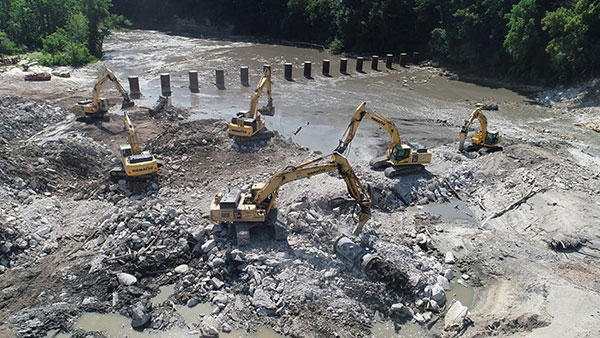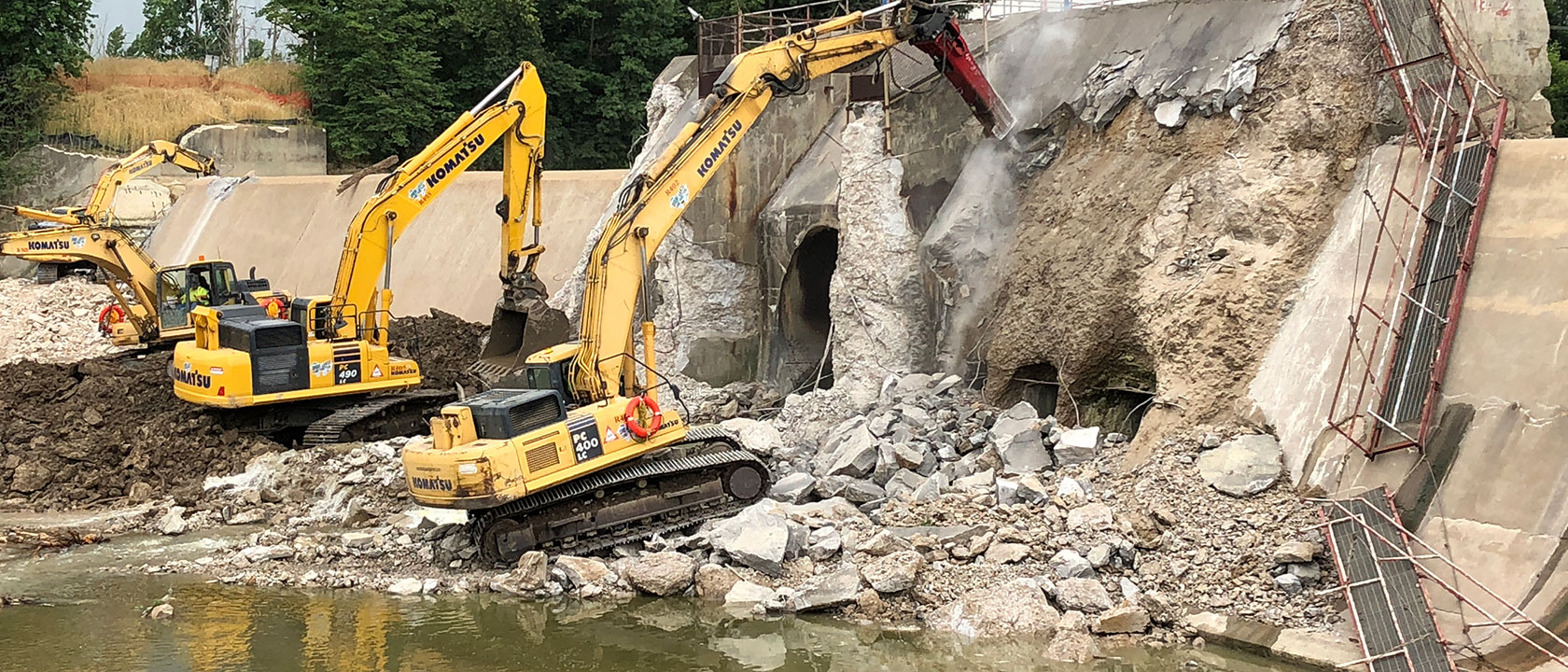Project 76-18
Fremont, OH
In 1913, the Ballville Dam was constructed on the Sandusky River for the purpose of generating hydroelectric power. The dam, located in Ballville Township just South of Fremont, OH, is approximately 420 ft. long and 35 ft. tall. The dam was originally used by the Ohio Power Company as a hydroelectric power source and in 1959 was purchased by the City of Fremont to use as a source of public water supply. Due to deterioration over time and maintenance issues with the dam, the City of Fremont constructed an intake channel and reservoir upstream of the dam that has been operating since 2013 as the City’s main source of water.
MWH Constructors (Construction Manager at Risk) selected The Great Lakes Construction Co. as a subcontractor with a contract value of $2.5 million to demolish the dam and restore the river to its original state. The Army Corps of Engineers approved the Project and issued a permit that allowed work to begin July 1st of 2018.
Before any work began, the Great Lakes’ Operations, Estimating, Project Management and Safety Departments worked together to develop a Demolition Plan and a Health & Safety Plan for the Project. The development of these plans required coordination between the City of Fremont, the Ohio Department of Natural Resources, the U.S. Fish & Wildlife Service, the US Army Corps of Engineers, and the Ballville Volunteer Fire Department’s Water Rescue team.
On Monday, July 2nd, the Great Lakes’ crew began work in the Sandusky River and was tasked with a schedule of 20 working days to complete 10,000 CY of concrete demolition. The crew consisted of 4-6 operators using large excavators (with vegetable oil*) and hydraulic hammer attachments. Great Lakes’ crew of operators and mechanics worked hard to tackle various challenges and were able to make the demolition phase a success for Great Lakes.
After completion of the Dam Demolition at the end of July, Great Lakes’ crews began river restoration work. The concrete rubble accumulated from the dam was processed and used as embankment on the north side of the Sandusky River just east of where the dam was located. Additionally, approximately 29,800 CY of silt was excavated from behind the dam and used for river embankment at various locations throughout the jobsite. Live staking of plants and trees is currently being installed to restore the riverbed.
* When working on sensitive waterways, replacing conventional petroluem-based hydraulic oil with vegetable oil is non-toxic to the environment and biodegradable.

This Project consisted of many unique activities and has showcased the range of work that Great Lakes is capable of performing, as well as the importance of quality assurance and maintaining a safe and efficient jobsite.

